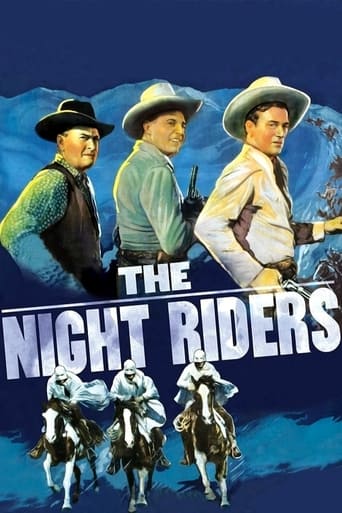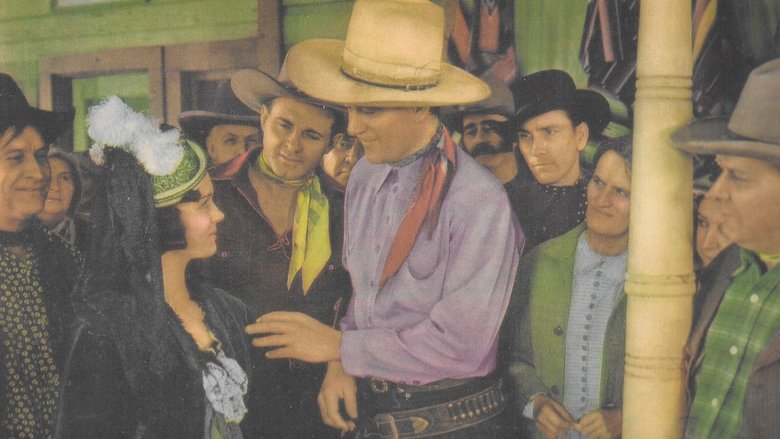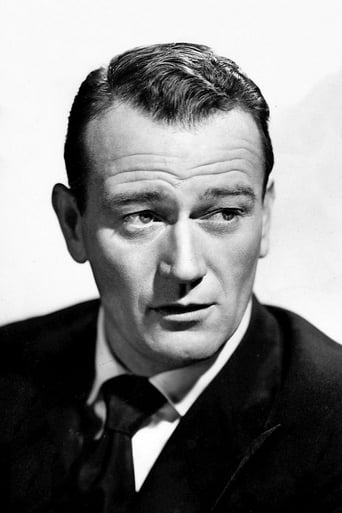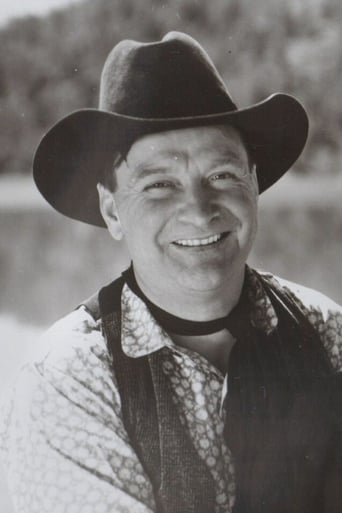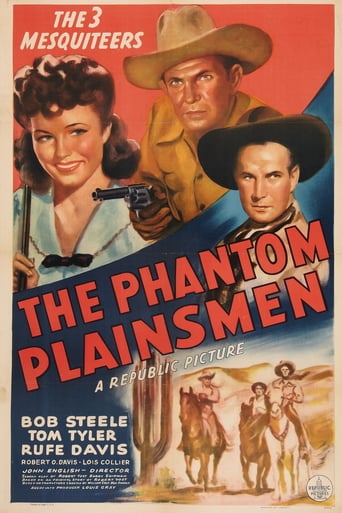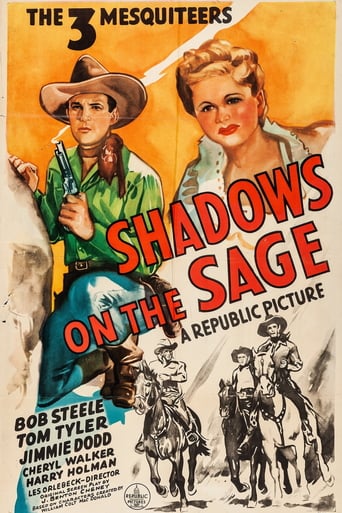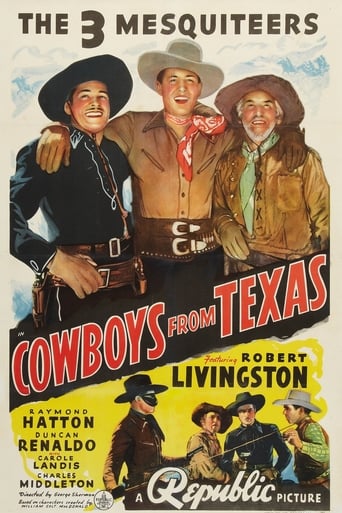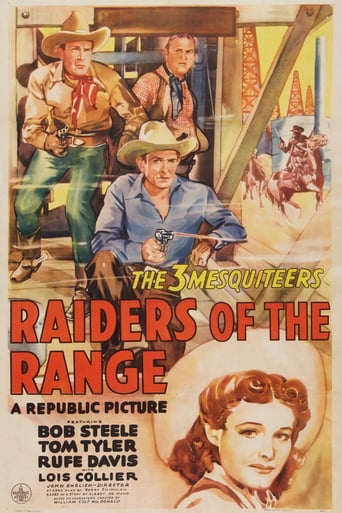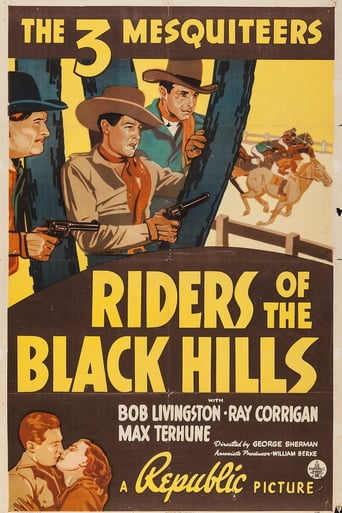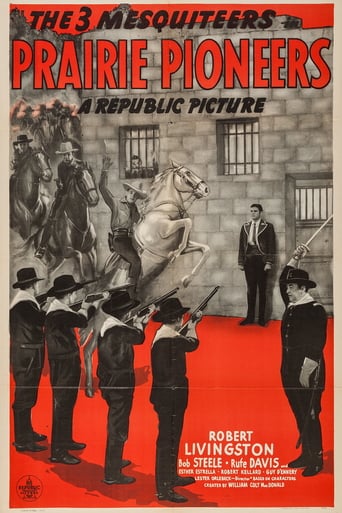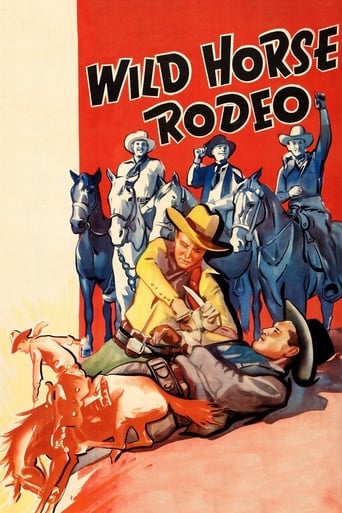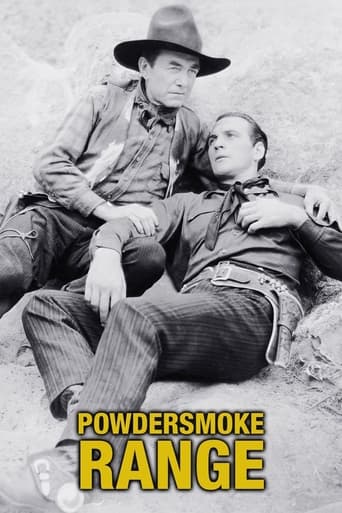The Night Riders (1939)
Talbot uses a phony land grant to rule thirteen million acres, taxing everyone heavily and evicting those who won't pay. The Three Mesquiteers becomes mysterious "night riders" to fight this evil.
Watch Trailer
Free Trial Channels
Cast


Similar titles
Reviews
Very Cool!!!
Stylish but barely mediocre overall
Dreadfully Boring
Go in cold, and you're likely to emerge with your blood boiling. This has to be seen to be believed.
One of 51 westerns by Republic. in the late '30s and early '40s under the banner of the 3 mesquiteers: a combination of mesquite and musketeers. The identity of the 3 actors varied. John Wayne was in only 8, including this one. With a run time of only 55 min., it packs in a lot of scheming and action. It's an early example of the directing of B westerns by George Sherman. He would eventually move to Columbia, and then to Universal, always almost exclusively directing B westerns. Here, Wayne, as Stony, Ray Corrigan, as Tucson, and Max Trehune as Lullaby are the 3Ms. The latter occasionally got out his dummy, Elmer, to practice his ventriloquism........ The plot involves the forging of a fraudulent land grant issued by the Spanish crown in the 18th century, and the fraudulent claim of being a direct descendent of the grantee, by an ex-con and gambler: Talbot(George Douglas), who acts as the puppet for the forger: Hazelton(Walter Wills acts as the Baron's beautiful wife.). Soledad(Doreen McKay). This grant is said to involve 13 million acres somewhere in the West. This may sound preposterous, but it's clear that this story is based upon the historical Peralta land grant fraud, in which James Addison Reaves devised a fraudulent land claim issued by the Spanish crown This involved 12 million acres(close to the stated 13 million acres in this film) in central Arizona and New Mexico.. This story is told more accurately in the 1950 "Baron of Arizona".......Here, Talbot as 'Baron' de Serrano, soon begins evicting settlers for inability to pay his exorbitant rent or fees for use of certain internal improvements. The #Ms are booted out of the ranch house. They send a letter of complaint to President Garfield, who replies that he can do nothing unless it can be proven that the Baron has done something illegal. Thus, the 3Ms decide to become secret vigilantes, wearing white capes and hoods .(Unfortunately, they look disturbingly like the getups typically worn by the KKK: another vigilante group). They were soon referred to as Los Capequeros. They rode around looking for the Baron's rent and fee collectors, to rob and give the money to those immediately threatened with eviction. Thus, they were like a mix of Zorro and Robin Hood. During a period, they even masqueraded as henchmen for the Baron's posse looking for them. Eventually, they are found out, and sentenced to death by a firing squad organized by the sheriff. Fortunately, the sheriff in on their side, and the Baron doesn't stay to watch the proceedings. WARNING: SPOILERS AHEAD! The sheriff puts blanks in the rifles and fakes their deaths. Assuming them dead, a large mob of townies heads for the Baron's hacienda, ready to string him up. The 3Ms ride out to the hacienda, and go around back to avoid the mob seeing them. They climb up from their horses and enter via a window. They stick up the frightened Baron, Soledad, and Hazleton. Hazleton confesses that he was the mastermind and maker of the fraud. Wayne tells them they won't reveal to the mob that they are alive until Hazleton and Talbot sign a paper confessing they are frauds.....Perhaps the film should have been titled "Day Riders", as they did most of their riding by day, when the rent collectors were active, and so as to distinguish them from certain other more violent vigilante groups sometimes referred to as the Night Riders. ...See it at YouTube.
Confession: I nearly always find early b-Westerns more or less enjoyable, there's usually a lot of pleasant easy familiarity and a lot of dated stuff that can or should be forgiven. Just switch off the analysin'. John Wayne made approximately one million of these swift potboilers before he made his name – the same year as Night Riders. Even good old Gene Autry didn't make as many.Baddies forge old document proving the legality of their claim to thirteen million acres of land – they promise fairness to the tenants but deliver harshness, endless taxes and death instead. How very like all politicians always! Wayne and his two sidekicks object to this and begin a fightback as mysterious caped crusaders – Los Capaqueros replacing The Three Mesquiteers. It's the usual stuff, sub-Zorro fisticuffs and shootouts complete with self conscious melodrama: therefore all I'd hoped for, nothing more. Wayne's cohorts Ray Corrigan and Max Terhune kept on mining the b-picture vein throughout the '40's while Wayne began his climb to superstardom and the making of many movie classics. Highly enjoyable non-serious time-filler!
I'm not really a fan of the old western - "B" film programmers like THE NIGHT RIDERS, but word of the reappearance of this film on television (from a friend who talked about it with me), raised my curiosity a little about it. Despite the appearance of John Wayne (who handles his "Three Meskeeter" role of "Stony" very well) and noting Ray "Crash" Corrigan's appearance in it as well, the film did not really thrill me.I suppose for a late Depression audience it was exciting enough. And they were not too bothered by historical mistakes that only people like me think about. Wayne, by the way, has one moment which I really did like. Pretending to be one of the bad guys he bullies the heroine (whom he really likes), and so disillusions her son that the boy silently pursues Wayne and his evil associates for awhile. There is also a showboat Captain later on, supposedly giving another character some vital information, who starts reminiscing about his own brilliant performance in Macbeth - a nice brief piece of ham that was welcome.The plot has a Spanish land grant upsetting the claims of hundreds of settlers in a southwestern territory. An aristocratic Mexican, Don Luis de Serrano (George Douglas) is making the claim, and apparently has the backing of the Government in enforcing them. He is backed by an adviser named Hazleton (Walter Wills), and they have even gotten a body of evil - doers as a private army. Those are the "Nightriders" of the plot.SPOILER COMING UP: Hazleton is a forger, and the scheme is a clever forgery of his. Don Luis is an actor named Talbot Pierce, who has a criminal record. This does not come out until the conclusion.Now, although it is not quite the same thing, the plot of Hazleton and Pierce is a rip-off of the plot of James Addison Reavis who tried to use forged land grants (and brilliantly forged ones they were) to give his so-called aristocratic wife title to the territory of Arizona (the subject of THE BARON OF ARIZONA). Interesting variation.The Meskeeters stumble on a sleepy eyed President James Garfield (Francis Sayles), tells him what is going on - and get his okay to support them when they produce the evidence against "Don Luis". When they get it, Wayne's girlfriend (Ruth Randall) sends a message to Washington, D.C. But as it arrives we hear Garfield getting shot! As was pointed out before by another poster, Garfield did not have enough time in his Presidency to make a trip out west like this. His Presidency lasted six months . In that period Garfield had enough time to do the following: 1) Set up his cabinet and diplomatic corps.2) Send the name of Stanley Matthews to the Congress as choice for an empty seat on the U.S. Supreme Court - Matthews was confirmed.3) Start a government prosecution of certain leading Republicans, including former Senator Thomas Dorsey, in the "Star Route Postal Frauds". 4) Support Secretary of State James G. Blaine in prosecuting U.S. business claims to a set of islands off Chile and Bolivia (at the time Bolivia had a seacoast) that were rich in nitrates.5) Get into a messy conflict with New York State's senior Senator, Roscoe Conkling, regarding Federal control over the New York City Customs House and it's management. This was a continuation of a similar confrontation from the previous Hayes Administration.Most of these acts took up his attention from March 4, 1881 to July 2, 1881. Given that he was starting his administration, and the pace of government work was slower (far slower) in 1881 than today, all five items I mentioned fully took up Garfield's attention. On a personal note, his wife Lucretia (or "Crete" as she was nicknamed) was seriously ill in May - June 1881, and Garfield was monitoring her recovery.No time for long trips into the western regions here. A trip to Elberon, N.J. in September 1881 was a last ditch attempt by his doctors to save him by using the ozone of sea air at that New Jersey resort.Why did the script writers throw in that bit about Garfield? Well, historically the death of Garfield was during the days of the old west. It was rarely used as a movie subject (if you check this web site, putting "President James Garfield" down under "Characters", there are only five films). The closest film to dealing with Guiteau is a 1968 film. A spaghetti western made in 1970 had Van Johnson as Garfield, changed the local and entire story of the assassination.I suppose that the very obscurity of Garfield's brief term prevents it from getting the exposure that the Lincoln, Kennedy, King, and even the Huey Long Case get in our films. Garfield was a competent man, but had no real opportunity to show what he could do. The sordid nature of his shooting (Guiteau wanted an ambassadorship and was never really in the running for it) reduces this murder.The scriptwriters had some idea of the shooting - though we only hear the shots and don't see it. The telegraph operator tells the messenger boy that Garfield was going to Williams College that day (that is true - he was invited to give a speech there).It's obvious that the scriptwriters were stealing a bit from the Robert Taylor - Barbara Stanwyck film, THIS IS MY AFFAIR, made a few years earlier. Taylor is a special government operative sent by McKinley to infiltrate a counterfeiting gang, who is sentenced to death just at the time McKinley (his only contact) is killed. But that had a better script and better production values. This "B" feature had very little (aside from the Duke) to compare with it.
The value of this today can be found in two things: the action -- that is, the obligatory saloon brawl, shootouts and horseback chases are all competent, and are filmed competently.The writing: the writer places himself in this -- as 'the Forger'-- and through his 'writings' he pulls the villain's strings. The storytelling centers on the notion of changing identities -- Douglas playing an ex-con, who becomes a card shark, who assumes the mantle of 'the Don'. And the heroes play the 'three Mesquiteers', who assume the identities of the 'Capequeros', who assume the identities of henchmen, who assume the 'identities' of corpses. It all resolves when the 'true identities' are revealed, and the villain is forced to extricate himself out of his false exterior through 'writing'.On the whole, this is not a very good Western...the screenplay, acting and dialogue are horrible. Sherman has to get poor marks too, for giving all of this a pass. Ironically, it would take a Kurosawa to utilize Western themes and turn them into great storytelling, a la "Seven Samurai".When you watch this, you can see where ideas came from for such spoofs as "Blazing Saddles" and "Three Amigos!".

